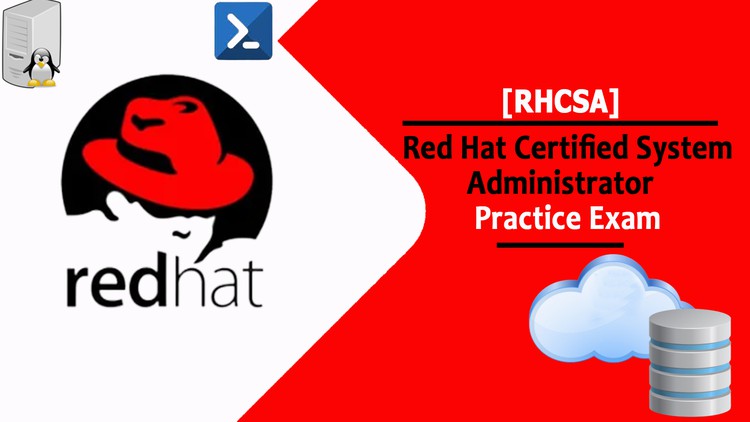
GET Red Hat Certified System Administrator (RHCSA) Exam successfully + Explanations
What you will learn
Choosing the answer by TRUE / FALSE approach
Learn to avoid the pitfalls of syntax
Increase your confidence to successfully pass RHCSA exam
Time management techniques for the exam
Description
[March 2022 Updated]: Latest exam questions added
If you are preparing for (RHCSA) Red Hat Certified System Administrator certification and looking for guidance and resources then you have come to the right place.
Finally! Pass Red Hat Certified System Administrator (RHCSA) Exam in just 3 days with a 100% money-back guarantee.
The purpose of this Practice Question Set is to help you pass the Certified Red Hat Certified System Administrator (RHCSA) exam. These practice questions will make you very familiar with both the type and the difficulty level of the questions on the (RHCSA) certification test. This practice exam gives you the feeling of reality and is a clue to the questions asked in the actual certification exam.
Prepare for your tests like a professional using our Certified RHCSA online practice tests that others have used to pass the exam in first attempt.
Overview:
IT professionals with a Red Hat Certified System Administrator (RHCSA) degree can perform the core systems administration skills required for a Red Hat Enterprise Linux environment. This qualification is earned by successfully passing the Red Hat Certified System Administrator (RHCSA) exam (EX200).
Topics covered
We’ve crafted this course to give you the knowledge and technique to pass the (RHCSA) certification in the first time. The practice tests include this topics:
- Understand and use essential tools for handling files, directories, command-line environments, and documentation
- Create simple shell scripts
- Operate running systems, including booting into different run levels, identifying processes, starting and stopping virtual machines, and controlling services
- Configure local storage using partitions and logical volumes
- Create and configure file systems and file system attributes, such as permissions, encryption, access control lists, and network file systems
- Deploy, configure, and maintain systems, including software installation, update, and core services
- Manage users and groups
- Manage security, including basic firewall and SELinux configuration
- Perform basic container management
Best of luck!
· Type : Multiple Choice – Multi-select – Practice quizz test
· Duration : 120 Minutes
· Number of Questions : 40-60
· Passing score : 700